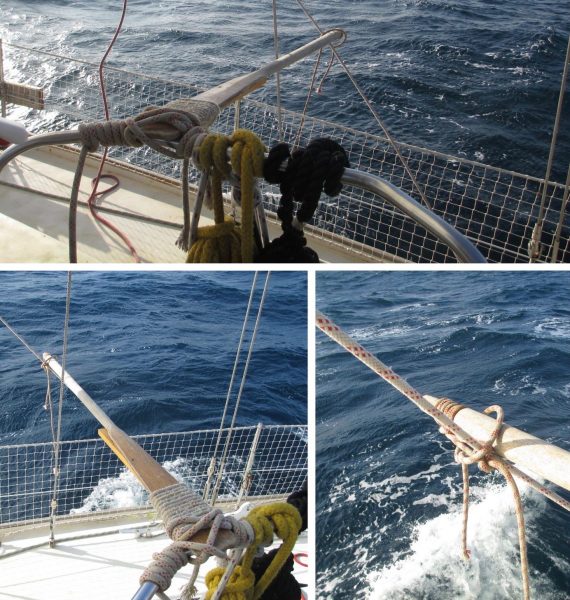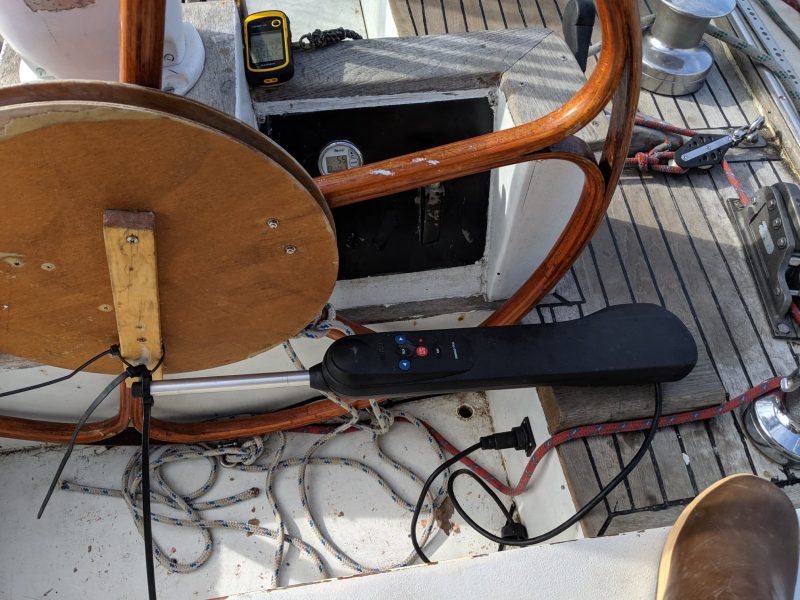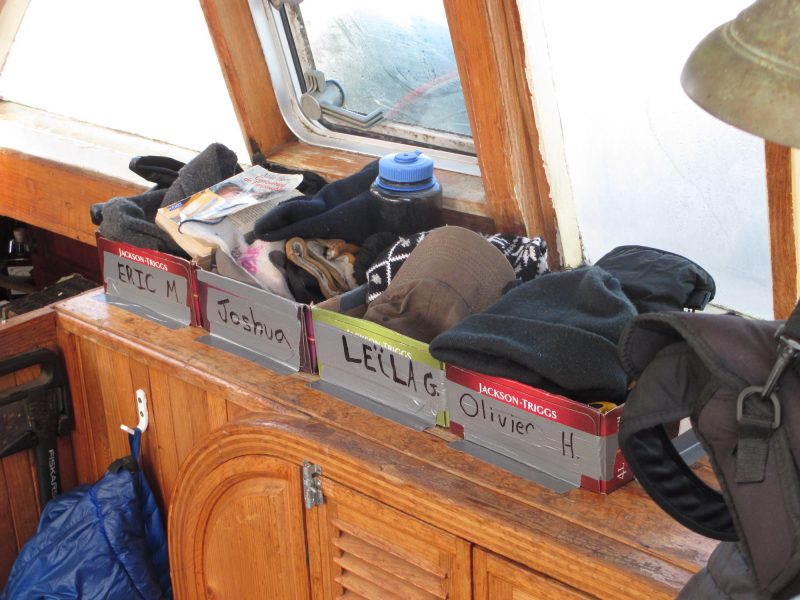
Tales from the Northwest Passage: Arctic ‘Bricolage’
I had spent the summer transiting the Northwest Passage, crewing on the 51-ft yellow wooden sailboat named Breskell. “C’est du bricolage,” said Olivier Huin, Breskell’s builder and captain, who used the term to describe his makeshift creation of a staysail pole. Bricolage (brē-kō-ˈläzh) as defined by the Merriam-Webster Dictionary, is the “construction achieved by using whatever comes to hand” and French in origin. This being a French boat, it was a French way of saying jury-rigged, jerry-built, or do-it-yourself. I loved it. I also recognized it as a common theme aboard Breskell. Allow me to elaborate.

On the last leg of our journey, Breskell was sailing across the Northern Pacific from the Aleutians to Washington State. When I awoke for my watch, she was running downwind with a poled-out genoa and poled- out staysail. But I knew she had only one pole. Olivier had improvised another from a dinghy oar, using some scrap lumber and extra line. The blade end, with the addition of the lumber, was lashed to the mast pulpit. The lumber created a notch the metal bar could nest in. The opposite end captured the staysail sheet in a bowline, also lashed on, holding out the sail just enough to keep it filled. We successfully sailed with this double pole setup from the morning to the late afternoon, when the wind changed direction. The pole served its short-lived purpose well and was a clever use of marlinspike.
Breskell‘s electronic autopilot was not sorted out until after we had left Newfoundland, where we started the expedition. We had a TP32 Tillerpilot, but wheel steering. To adapt the instrument to the helm, we epoxied the tiller pin into a piece of light lumber and C-clamped this to the wheel. Later, in Greenland, we upgraded from the clamps by properly screwing the pin to the wheel. Due to the horizontal orientation of the tiller pin (intended to be vertical), we added a zip tie to keep the piston from popping off. Throughout the summer, the autopilot was impressive, steering through choppy seas and confused swells. It was the workhorse of the helm. Maintenance issues came up when the forces sheared off a screw and, later, the tiller pin. The screw was easy to replace, and there was still enough of the pin to re-epoxy back into the lumber.

As the crew headed to and from the cockpit, we quickly learned that the shelf by the companionway was a natural go-to for hats, gloves, books, water bottles, and the like. We also learned that with the heeling and rolling, nothing was safe there. Gear would slide off, usually when we were asleep. A groggy-eyed search would ensue for “that second glove” before we went on deck. A simple solution proposed by crew member Eric worked like a charm, though it required some wine-drinking from Breskell’s crew. Since we were laid over in Greenland for a week, waiting for the ice to clear, we enlisted newfound friends to help too. Repurposed wine boxes and duct tape made for useful personalized bins. It turns out Eric is a seasoned wine box repurposer, with holdovers from a previous expedition amongst the boat’s drawers. Modifications were simple too. We fixed improperly spelled names and moved my box to the end, away from the hatch.

When you are away from port, or in places where supplies and options are limited, improvisation is the order of the day. A bit of bricolage is bound to enter your “deal with it” repertoire. Given enough time, even the most prepared sailors will succumb. Space, time, economic constraints, unforeseen circumstances, poor planning, or a seat-of-the-pants style will often inspire it or demand it. Bricolage won’t win you any “best in show” awards, but it may help get you from one ocean to another. The Resourceful Sailor hopes to shed light on the various ways to “make things work.”
Remember, keep your solutions prudent and safe, and have a blast.

I salute Breskell and its crew for making Northwest Passage 2019.
Its actually two season escape may provide many lessons for others. In those forbidding Arctic waters you never know what to expect. Personally I only had contacts with Olivier while mostly with Eric and not with Joshua. I was guiding them through as I did to over 70 sail boats in past 15 years. Unfortunately I don’t have
now any contact with Breskell them as their X-Gate Satellite EMail account is not active any more.
Victor, thank you for the comment. You were a great resource during the passage. I recall we had one communication as I passed on info for Eric. Thank you. Feel free to contact me via my website, https://sailingwithjosh.com and I can share contacts with you for Olivier and Eric.